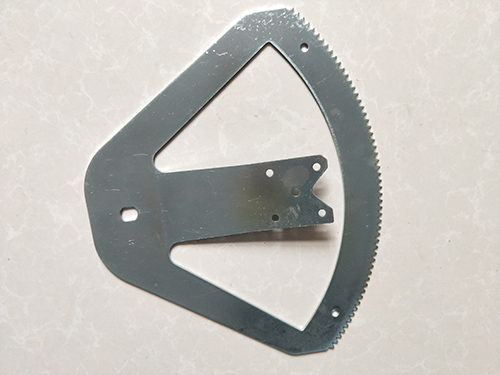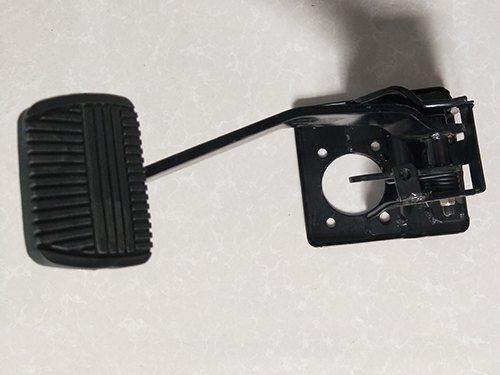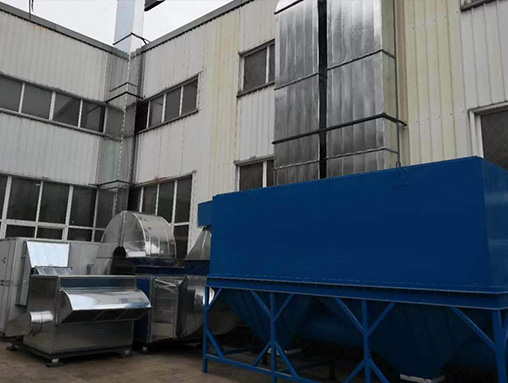Service life and material selection requirements for stamped parts
In terms of stamping parts, the inspection operation is also an important aspect for this product. The inspection of stamped parts generally involves the following methods, which are detailed as follows.
Contact inspection: First, wipe the surface clean with gauze, then the inspection personnel wear contact gloves and make contact along the longitudinal direction of the stamped part. It is a useful method, but it requires experience. First, use gauze to clean the surface of the flexible mesh for polishing. Then, use a flexible sand mesh to tightly adhere to the surface of the stamped part and polish the entire surface longitudinally to check for any indentations or pockmarks on the surface.
Oil inspection: First, wipe the surface clean with gauze, and then apply oil to the entire surface, paying attention to the consistent direction of oil application. Afterwards, place it under strong light to check for any blemishes, ripples, etc. Stamping parts may encounter some problems during the manufacturing process. However, encountering them is not scary, the key is how to deal with and handle them correctly, which is more important.
Adhesive bonding and scratching: It is due to conflicts between the material and the concave or convex mold, or due to poor appearance of the mold. Burr: It is due to the gap between the cutting edges being too large or too small. Concave convex: It is formed when foreign objects are mixed into the mold on the unwinding line. Wrinkles: It is due to low precision, improper pressure adjustment, etc.
For the production of stamped parts, if stainless steel is used as the steel raw material, the hardware parts punched out from it often have appearance defects such as point damage, pressure damage, and scratches. At the same time, when this situation occurs, vacuum cleaners and exhalation nozzles are installed on the punching machine, but the effect is not ideal.
There are actually many ways to deal with this situation:
1. Add protective film and stick it on the material. When purchasing the material, just ask the supplier. Do not add oil or water during product processing. It is better to release the products one by one during production. Overlapping cutting edges can easily cause compression and collision! High cost, can be considered.
2. If it really doesn't work, you can try using different raw materials. The performance of SUS and domestically produced ones can sometimes differ greatly. The performance of different domestic suppliers also varies, but controlling costs while ensuring sufficient performance is also a solution to the problem!
3. Add an appropriate amount of punching and cutting oil (to lubricate the punch and prevent debris from being generated), clean the mold regularly, grind the punch in a timely manner, keep it sharp, and reduce the generation of debris!
4. The smoothness of the mold should be good, and the surface of the mold should be cleaned with a brush during processing. The mold surface and workbench should be cleaned regularly, and there should be no iron filings or other particle impurities on the material or mold surface that can cause pressure damage. However, the production efficiency is reduced Compared to the scrap rate, it is acceptable!
Electronic stamping parts are widely used in various industries, most of which are made into finished products through stamping. The body, chassis, fuel tank, radiator fins of automobiles, the steam drum of boilers, the shell of containers, the iron core of motors, and the silicon steel sheets of electrical appliances are all stamped and processed. There are also a large number of stamped parts in products such as instruments, household appliances, bicycles, office machinery, and household utensils.
The purpose of the forming process is to cause plastic deformation of the sheet metal without breaking the billet, and to produce workpieces of the desired shape and size. In actual production, multiple processes are often integrated into one workpiece. Among them, punching, bending, shearing, deep drawing, bulging, spinning, and straightening are the commonly used main stamping processes.
Electronic stamping parts mainly rely on presses and molds to apply external forces to plates, strips, pipes, and profiles, causing them to undergo plastic deformation or separation, thereby obtaining the desired shape and size of the workpiece (stamping part) through forming processing methods.
Electronic stamping parts are mainly classified by process, which can be divided into two categories: separation process and forming process. The separation process, also known as punching, aims to separate the stamped parts from the sheet metal along the contour line while meeting the quality requirements of the separated section. The surface and intrinsic properties of stamping sheet metal have a significant impact on the quality of stamped products, requiring stamping material thickness and uniformity; The surface is smooth, without scars, scratches, surface cracks, etc; Uniform yield strength without obvious directionality; High uniform elongation rate; Low yield to strength ratio; Low work hardening.
As a type of metal material for automotive parts, some of the stamped parts can be directly used in automobiles, while others require corresponding processing techniques to become automotive components. The material of automotive stamping parts will directly affect the service life and quality of the components. So, what are the material selection requirements for automotive stamping parts?
1、 Meet the needs of the required process
When choosing raw materials for automotive stamping parts, it is important to understand the mechanical, physical, and chemical properties exhibited by the mechanical parts in service. For example, when automotive stamping parts are used on frame crossbeams, longitudinal beams, carriages, etc., these parts play a basic supporting role, so it is necessary to choose parts with good load-bearing capacity and high load capacity.
2、 Types and usage characteristics of stamped parts
Before choosing raw materials for automotive stamping parts, it is necessary to know the type and usage characteristics of the automotive stamping parts. Only in this way can suitable metal materials be selected based on their type and usage characteristics, which can not only improve product quality but also extend the service life of automotive stamping parts and improve the efficiency of material use.
3、 Having good production technology
In addition to selecting based on the type and usage characteristics of automotive stamping parts, it is also necessary to choose good process performance. Only in this way can the stamped parts produced have good economic practicality.
4、 Cold stamping process
At present, the cold stamping process is commonly used in the production of automotive stamping parts. The quality of cold stamping materials will directly determine the performance, service life, and cost of the product. Therefore, it is necessary to choose economically suitable stamping materials according to the requirements.
5、 Hardness testing
Why does the stamping material purchased by the factory need to undergo longitude testing before processing?
In fact, the hardness testing of stamping materials is mainly aimed at determining whether the annealing degree of the purchased metal sheet is suitable for the subsequent stamping processing and smooth processing. Different workpiece processing techniques require plates of different hardness levels. Aluminum alloy plates used for workpiece processing can be tested using a Vickers hardness tester. When the material thickness is greater than 13mm, a Babbitt hardness tester can be used instead. Pure aluminum plates or low hardness aluminum alloy plates should use a Babbitt hardness tester.







